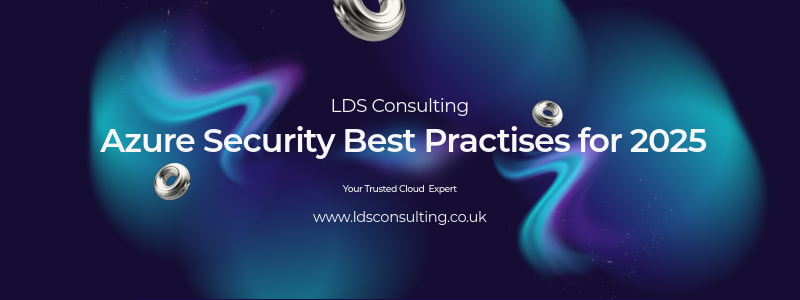
Securing Your Cloud Environment - Best Practices for Azure
31 Mar 2025 · Azure, Security, Compliance, Cloud Best Practices
Explore how to protect your Azure environment with proactive security measures and compliance-focused practices, ensuring data integrity and advanced threat detection.
Why Azure Security Matters
As organizations move to the cloud, securing workloads and sensitive data becomes a top priority. Azure offers powerful built-in tools, but the responsibility to configure and govern your environment correctly still lies with you. Whether you're managing a small deployment or a complex enterprise setup, implementing strong security foundations is critical for operational resilience and compliance.
Core Azure Security Best Practices
Here’s a breakdown of actionable best practices to strengthen your Azure environment:
1. Adopt the Shared Responsibility Model
Microsoft secures the underlying cloud infrastructure, but you are responsible for protecting your workloads, data, identity, and network configurations.
- Understand what Microsoft secures vs. what you must secure
- Review this regularly, especially when introducing new services
2. Implement Identity and Access Management (IAM)
Controlling access is foundational. Azure Active Directory (Entra ID) should be your central identity plane.
- Use Role-Based Access Control (RBAC) to assign minimum permissions
- Enable Multi-Factor Authentication (MFA) for all users, especially admins
- Leverage Privileged Identity Management (PIM) to enforce just-in-time access
3. Enable Defender for Cloud
Microsoft Defender for Cloud offers security posture management and advanced threat protection for hybrid and multi-cloud environments.
- Continuously monitor for misconfigurations and threats
- Get security recommendations based on the Secure Score
- Enable workload protection for VMs, containers, SQL, and more
4. Use Network Security Best Practices
Your network architecture plays a vital role in minimizing exposure.
- Isolate workloads using Azure Virtual Networks and NSGs
- Protect endpoints with Azure Firewall or Barracuda WAF
- Enable DDoS Protection for public-facing resources
5. Encrypt Data at Rest and in Transit
Data encryption is a core compliance and security requirement.
- Use Azure-managed keys or your own customer-managed keys
- Encrypt all communications with TLS
- Protect sensitive data using Azure Key Vault for key and secret management
6. Audit, Monitor, and Alert
Visibility is key to identifying anomalies early.
- Enable Diagnostic Settings for every resource
- Centralize logs using Log Analytics and monitor with Azure Monitor
- Create actionable alerts with Azure Sentinel or third-party SIEM/XDR tools like Rapid7
7. Ensure Compliance and Governance
Cloud governance aligns your security with business policies and regulatory requirements.
- Apply Azure Policy to enforce standards (e.g., disallow public IPs)
- Use Blueprints for repeatable, compliant deployments
- Regularly review compliance reports via Compliance Manager
Strengthening Security Culture
Technology alone won’t protect your cloud — people and processes matter too.
- Schedule regular security reviews and penetration testing
- Provide security awareness training for your team
- Document and review your incident response plan
Start with a Security Assessment
If you're unsure where your Azure environment stands, begin with a comprehensive Azure Security Assessment. This can uncover misconfigurations, permission issues, and unused services — helping you take control before attackers do.
Need help reviewing your environment? LDS IT Consultancy offers tailored security audits aligned with your industry’s compliance needs. Book a 1-2-1 session today.
Final Thoughts
Securing your Azure cloud environment is an ongoing journey. By combining native Azure tools with best practices in identity, monitoring, governance, and culture, you can reduce risk, maintain compliance, and protect your critical data.
Keep security proactive — not reactive.